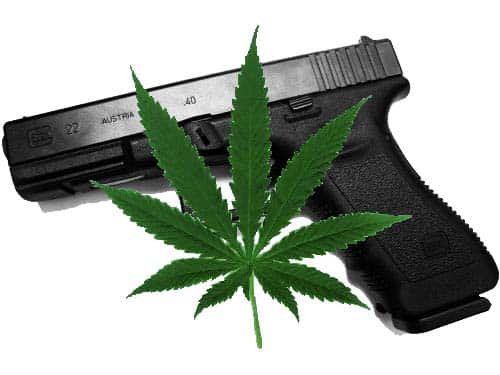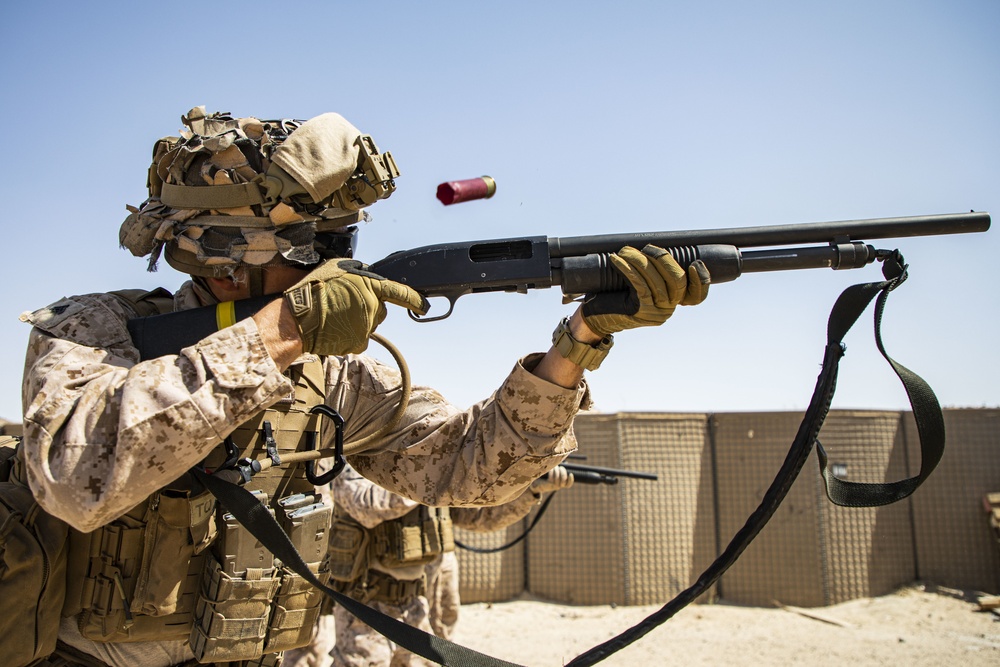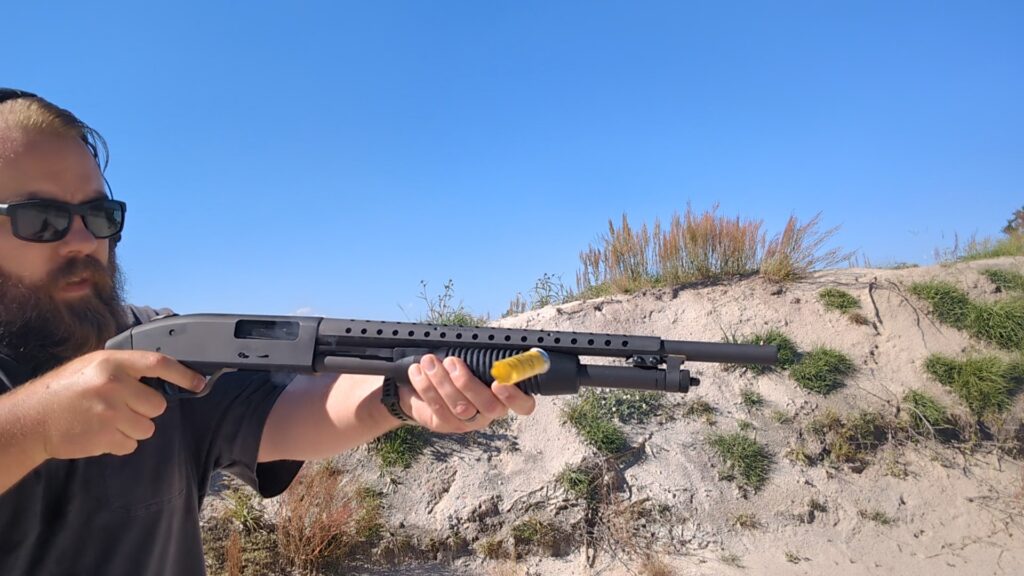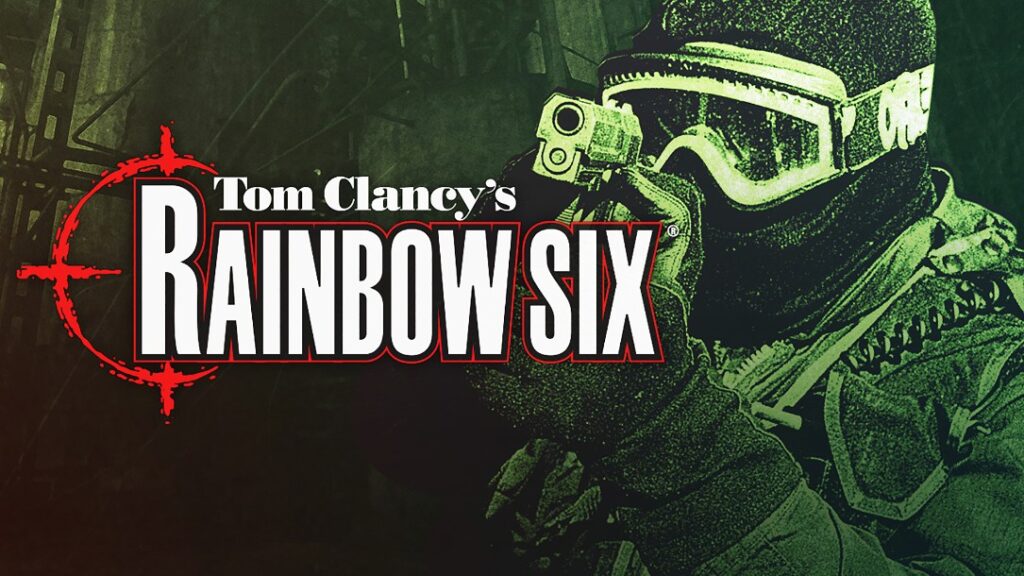The Legislation of Marijuana: States’ Rights vs. Federal Government Will and the Ramifications for Second Amendment Rights

By: Birdie Andree – MASF Member
There are many cogent arguments both for and against the decriminalization of marijuana; for every positive reason one can find for cannabis legislation, there is a negative rejoinder to be found. Even if we narrow our focus solely to the medical aspect of this issue, we still encounter a vast spectrum of evidence supporting either side of the debate. A few examples of the significant therapeutic benefits of medicinal marijuana and its derivatives can serve to illustrate the validity of legalizing the drug. It is used to control pain, spasms, and sleep disturbances in patients with multiple sclerosis.(1)(2) It also successfully controls pain in patients with cancer,(3) AIDS,(4) and chronic migraine headaches.(5) It is being used to decrease seizure frequency in epileptic patients,(6) to treat wasting disease in HIV(7) and CNS(8) patients, to counteract the side effects of nausea and loss of appetite from chemotherapy.(9) Conversely, studies have also shown that using marijuana, even infrequently, interferes significantly with brain development in younger users(10)(11), and, in the case of long-term users, the loss of IQ points on a level akin to that of brain damage due to lead poisoning.(12) Cannabis use has been demonstrated to be a direct cause of the increased rate of strokes in otherwise healthy people as young as 19 years of age.(13) The drug has even been proven to be the source of outbreaks of salmonella(14) and aspergillus(15) contaminations which can cause lethal infections especially in the immunocompromised. Given the extreme dichotomy between the benign aspects of cannabis use and the potential for its abuse and possibly devastating side effects, states must carefully weigh the decision to legalize marijuana on any level. While some states have mandated that cannabis is safe enough to be sanctioned as a recreational drug, the vast majority of states that permit its use do so solely on a therapeutic level. In Alaska, Colorado, Oregon, Washington, and the District of Columbia where marijuana is deemed lawful as a recreational drug(16) there is little to no legal or social distinctions between the use of pot or alcohol. However, patients who must register for a medical marijuana card in states which only allow for the medicinal use of the plant are being forced to forfeit their Second Amendment rights to have access to doctor-recommended medicine. Unless the Federal government lifts the Schedule I status of marijuana, the legality of its use as a state level legally sanctioned medicine becomes moot. The fight between the States to legislate for their citizens and the Federal government to impose its will has become a battleground upon which citizens are being stripped of their constitutional rights.
Advertisement — Continue Reading Below
Our system of checks and balances has served to protect cannabis-friendly states and their elected officials from federal prosecution by the Department of Justice and, if somewhat more slowly, to protect both the means of production and distribution of cannabis within those states. To insulate these states and put an end to the Justice Department’s overly zealous prosecution of marijuana producers and distributors operating legally within their borders, Representatives Dana Rohrabacher (R- California) and Sam Farr (D-California) sponsored an amendment to the Fiscal Year 2015 Commerce, Justice and Science Appropriations bill, to wit: “None of the funds made available in this Act to the Department of Justice may be used… to prevent such States from implementing their own State laws that authorize the use, distribution, possession, or cultivation of medical marijuana.” (17)The House approved the spending bill and the amendment, section 542, along with it by a vote of 219 yays to 189 nays.(18) It did so again the following year with a vote of 242 to 186.(19) While the Rohrabacher-Farr amendment must be renewed each fiscal year, it would seem that the House of Representatives is committed to doing so. Notwithstanding the section 542 rider, the Justice Department continued to prosecute marijuana farmers and dispensaries. However in a consolidated case brought before the 9th Circuit Court in December of 2015, United States v. McIntosh, ten defendants argued that the DOJ had no standing to indict the defendants as they were protected under section 542. The court agreed, and in its ruling, filed on August 16, 2016, found that the accused were entitled to evidentiary hearings that they may be given a chance to prove their compliance with state regulations before the Justice Department could proceed to forfeiture and indictment. (20) Thusly, the states and their agents are protected, both under the law and in the courts, from legal persecution by the Federal government. However, as will be explored, the individual patient is not afforded these same protections and as such is forced to choose between access to their state-sanctioned medicine and their Second Amendment rights.
To comply with state regulations, a medicinal marijuana user must obtain a medicalmarijuana card. This act alone immediately precludes them from legally exercising their Second Amendment rights. With only “rare exceptions” allowed, every legal purchase of a gun must include a National Instant Criminal Background Check of the purchaser. The buyer must fill out ATF form 4473 which allows for said background check of them to proceed.(21) For this discussion, the most important question on form 4473 is Number 11, e. which asks “Are you an unlawful user of, or addicted to, marijuana or any depressant, stimulant, narcotic drug, or any other controlled substances?” Question 11,e. includes the following boldfaced warning: “The use or possession of marijuana remains unlawful under Federal law regardless of whether it has been legalized or decriminalized for medicinal or recreational purposes in the state where you reside.” (22) On September 21, 2011, the U.S. Department of Justice, Bureau of Alcohol, Tobacco, and Firearms and Explosives put out an “open letter to all federal firearms licensees.” The author of this letter, Arthur Herbert, Assistant Director of Enforcement Programs and Services for the ATF, categorically states that anyone who possesses a medical marijuana card is considered to be “an unlawful user of a controlled substance.” He further declares that it is illegal to “transfer firearms or ammunition to the person, even if the person answered ‘no’ to question 11.e. on ATF Form 4473.” (23) For a relevant case on point, we can examine Wilson v. Holder. On October 4th of 2011, Wilson attempted to purchase a handgun from a local gun store. The owner of the establishment knew Wilson personally, and as such, knew she was a registered medical marijuana cardholder. He followed the law and rightfully refused to sell her the gun she was attempting to purchase citing the open letter admonition from the ATF as his reason for refusal. As a result, Wilson then filed suit in the Federal District Court of Nevada, Wilson v. Holder, asserting that her Second Amendment Rights had been violated. The court rejected her arguments and dismissed the case with prejudice. (24) Wilson then appealed to thecourt of appeals. As with the case of United States v. McIntosh, the case of Wilson v. Loretta E. Lynch et al, was adjudicated by the 9th Circuit Court. However, in S. Rowan Wilson’s case, the court refused to protect Wilson’s rights and upheld a motion from the federal governmentdefendants to dismiss the case.(25) They based their conclusions on circular logic, faultysyllogism, and bad precedent.
Rowan Wilson has the option of returning her registration card to the State of Nevada to re-secure her Second Amendment rights; however, a patient who is dependent upon their medicine does not have the same luxury. While Congress has protected the states’ rights, and the courts have protected the rights of the growers and distributors, both have turned their backs on the most vulnerable, the patients. It becomes readily apparent that the Federal Government, and the courts working as its agents, are using the discrepancy between the Schedule I designation of marijuana and the state-sanctioned medical use of the drug to further a specific political agenda; namely, to curtail the Second Amendment rights of medical marijuana patients. As of March 1, 2016, there are one million two hundred forty-six thousand one hundred seventy registered legal medical marijuana patients in the United States,(27) and every single one of them has had to forfeit their Second Amendment rights. It is unconscionable that so many United States citizens have been forced to choose between their health and their constitutionally protected rights. Half of the states in America have already legalized cannabis use on some level while more are poised to do so; couple this with the knowledge that our courts are already over populated with judges who are willing to twist or ignore existing laws to “make policy” or push a political agenda. The implications for the immediate and long-term ramifications to our right to bear arms are staggering.
Advertisement — Continue Reading Below

End Notes
National Multiple Sclerosis Scociety. N.p., nd. Web. 2. Zajicek JP, Hobart JC, Slade A, Barnes D, Mattison PG; MUSEC Research Group. Multiple sclerosis and extract of cannabis: results of the MUSEC trial.Journal of neurology, neurosurgery, and psychiatry (2012) 83(11):1125-32. Web.doi: 10.1136/ jnnp-2012-302468.3. Johnson, MB chB, Jeremy R., Mary Burnell-Nugent, Dominique Lossignol, Elena D. Ganae-
Motan, and Marie T. Fallon. “Multicenter, Double-Blind, Randomized, Placebo-Controlled, Parallel-Group Study of the Efficacy, Safety, and Tolerability of THC:CBD Extract and THC Extract in Patients with Intractable Cancer-Related.” Journal of Pain and Symptom Management 52.3 (2010): 167-79. Web. 14 Oct. 2016. <DOI: http://dx.doi.org/10.1016/j.jpainsymman.2009.06.008>.4. Abrams, D.I., C.A. Jay, S.B. Shade, H. Vizoso, and H. Reda. “Cannabis in painful HIVassociated sensory neuropathy.” Neurology 68.7 (2007): 515-21. Web. 14 Oct. 2016.
<doi: http://dx.doi.org/10.1212/01.wnl.0000253187.66183.9c>.5. Borgelt, Laura M. “Effects of medical marijuana on migraine headache frequency in an adult population.” Pharmacotherapy 36.5 (2016): 505-10. Web. doi: 10.1002/phar.16736. Devinsky, Orrin, Maria R. Cilio, Helen Cross, Javier Fernandez-Ruiz, and Jacqueline French.
“Cannabidiol: Pharmacology and potential therapeutic role in epilepsy and other neuropsychiatric disorders.” Epilepsia 55.6 (2014): 791-802. Web. DOI: 10.1111/epi.126317. Struwe, Melissa, Suzanne H. Kaempfer, Constance J. Geiger, Andrew T. Pavia, and Terry F.
Plasse. “Effect of Dronabinol on Nutritional Status in HIV Infection.” AOP Annals of Pharmacotherapy 27.7 (1993): 827-31. Web. doi: 10.1177/106002809302700701
8. Croxford, J. Ludovic. “Therapeutic Potential of Cannabinoids in CNS Disease.” CNS Drugs
17.3 (2012): 179-202. Web.
doi:10.2165/00023210-200317030-000049. Jatoi, A., Windschitl, H.E., Loprinzi, C.L., Sloan, J.A., Dakhil, S.R., Mailliard, J.A.,
Pundaleeka, S., Kardinal, C.G., Fitch, T.R., Krook, J.E., Novotny, P.J. and Christensen,
B.“Dronabinol versus megestrol acetate versus combination therapy for cancerassociated
anorexia: a North Central Cancer Treatment Group study”. Journal of Clinical
Oncology,(2002):20(2), 567-73. Web.10. Weir, Kirsten. “Marijuana and the developing brain.” American Psychological Association
46.10: (2015) 37 pars. Web.11. Filbey, Francesca M., Tim McQueeny, Samuel J. DeWitt, and Virednra Mishra. “Preliminary findings demonstrating latent effects of early adolescent marijuana use onset on cortical architecture.” Developmental Cognitive Neuroscience 16 (2015): 16-22. Web.
doi:10.1016/j.dcn.2015.10.00112. Meier, Madeline H., Avshalom Caspi, Antony Ambler, HonaLee Harrington, and Renate
Houts. “Persistent cannabis users show neuropsychological decline from childhood to
midlife.” PNAS 109.40 (2012): 30 pars. Web. doi: 10.1073/pnas.120682010913. Wolff, Valerie, Jean-Paul Armspach, Valerie Lauer, Olivier Rouyer, and Marc Bataillard.
“Cannabis-related Stroke: Myth or Reality?” Stoke 44.2 (2013): 558-63. Web.
doi:10.1161/STROKEAHA.112.67134714. Taylor, M.D., David N., Kaye Wachsmuth, Ph. D., Yung-hui Shangkaun, M.S., Emmet V.
Schmidt, M.D., and Timothy J. Barrett, M.S. “Salmonellosis Associated with
Marijuana- A Multistate Outbreak Traced by Plasmid Fingerprinting.” The New England
Journal of Medicine 306.21 (1982): 1249-53. Web. DOI: 10.1056/
NEJM19820527306210115. Gargani, Yousef, Paul Bishop, and David W. Denning. “Too Many Mouldy Joints-Marijuana
and Chronic Pulmonary Asperigillosis.” Mediterranean Journal of Hematology and
Infectious Diseases 3.1 (2011): 16 pars. Web. doi: 10.4084/MJHID.2011.00516. State Marijuana Laws Map. Map. Governing. Ed. Zach Patton, Elizabeth Daigneau, Alan
Ehrenhalt, Paul W. Taylor, and Penelope Lemov. N.p., 26 May 2016. Web.
http://www.governing.com/gov-data/state-marijuana-laws-map-medical-recreational.html17. Sullum, Jacob. “9th Circuit Says Feds May Not Prosecute State-Legal Medical Marijuana
Suppliers: The appeals court rules that Congress has forbidden such interference.”
reason.come 17 Aug. 2016: 9 pars. Web.
<http://reason.com/blog/2016/08/17/9th-circuit-says-feds-may-not-prosecute>.18. Farr, Sam. “Farr Statement on Rohrabacher-Farr Medical Marijuana Amendment.”
Congressman Sam Farr: Representing California’s Central Coast (CA-20). N.p., 2014.
Web.19. ”Rohrabacher Hails Passage of Medical Marijuana Amendment.” Congressman Dana
Rohrabacher: Proudly Serving California’s 48th District. N.p., 4 June 2015. Web.20. ”United States of America, Plaintiff-Appellee, v. Steve McIntosh, et al Defendant-Appellant
Opinion.” United States Courts for the Ninth Circuit. Ed. Diarmuid F. O’Scannlain. N.p.,
16 Aug. 2015. Web.
<https://cdn.ca9.uscourts.gov/datastore/opinions/2016/08/16/15-10117.pdf>.21. ”Private Sales Restrictions and Gun Registration.” NRA-ILA: Institute for Legislative Action.
N.p., 17 Jan. 2013. Web.
<https://www.nraila.org/articles/20130117/private-sales-restrictions-and-gun-registration>.22 ”Firearms Transaction Record OMB No, 1140-0020.” ATF Bureau of Alcohol, Tobacco,
Firearms and Explosives. N.p., n.d. Web. 12
<https://www.atf.gov/resource-center/docs/form-example-firearms-transaction-record/
download>.
23.Herbert, Arthur. “Open Letter to all Federal Firearms Licensees.” ATF Bureau of Alcohol,
Tobacco, Firearms and Explosives. N.p., 21 Sept. 2011. Web.
<https://www.atf.gov/file/60211/download>
Advertisement — Continue Reading Below
24.Gloria M “S.Rowan Wilson, an individual, Plaintiff, vs. Eric Holder et al Case No.:
2:11-cv-01679-GMN-PAL.” JUSTIA Dockets & Filings. N.p., 11 Mar. 2014. Web. 9
<https://cases.justia.com/federal/district-courts/nevada/nvdce/
2:2011cv01679/83947/49/0.pdf?ts=1394721175>.
25. Rakoff, Jed S. “S. Rowan Wilson, Plaintiff-Appellant, v. Loretta E. Lynch et al: No 14-15700
D.C.No. 2:11-CV-01679-GMN-Pal Opinion.” United States Courts for the Ninth Circuit.
N.p., 31 Aug. 2016. Web. 11
<http://cdn.ca9.uscourts.gov/datastore/opinions/2016/08/31/14-15700.p
26. Graber, Susan P. “UNITED STATES OF AMERICA, Plaintiff-Appellee KEVIN V. DUGAN,
Defendant-Appellant. No. 08-10579 D.C. No.5:03-cr-20010-0- RMW-1 OPINION.” United
States Courts for the Ninth Circuit. N.p., 20 Sept. 2011. Web.
<http://cdn.ca9.uscourts.gov/datastore/opinions/2011/09/20/08-10579.pdf>Navarro,
Advertisement — Continue Reading Below
27. “How Many Legal Medical Marijuana Patients Are There in the United States?” Chart.
ProCon.org . Web. 8 Oct. 2016.
<http://medicalmarijuana.procon.org/view.resource.php?resourceID=005889>.
Calvin College openURL resolver
Works Cited
sensory neuropathy.” Neurology 68.7 (2007): 515-21. Web. 14 Oct. 2016.
<doi: http://dx.doi.org/10.1212/01.wnl.0000253187.66183.9c>.Borgelt, Laura M. “Effects of medical marijuana on migraine headache frequency in an adult
population.” Pharmacotherapy 36.5 (2016): 505-10. Web.
doi: 10.1002/phar.1673Croxford, J. Ludovic. “Therapeutic Potential of Cannabinoids in CNS Disease.” CNS Drugs 17.3
(2012): 179-202. Web.
doi:10.2165/00023210-200317030-00004Devinsky, Orrin, Maria R. Cilio, Helen Cross, Javier Fernandez-Ruiz, and Jacqueline French.
“Cannabidiol: Pharmacology and potential therapeutic role in epilepsy and other
neuropsychiatric disorders.” Epilepsia 55.6 (2014): 791-802. Web.
DOI: 10.1111/epi.12631Farr, Sam. “Farr Statement on Rohrabacher-Farr Medical Marijuana Amendment.”
Congressman Sam Farr: Representing California’s Central Coast (CA-20). N.p., 2014.
Web.Filbey, Francesca M., Tim McQueeny, Samuel J. DeWitt, and Virednra Mishra. “Preliminary
findings demonstrating latent effects of early adolescent marijuana use onset on cortical
architecture.” Developmental Cognitive Neuroscience 16 (2015): 16-22. Web.
doi:10.1016/j.dcn.2015.10.001Gargani, Yousef, Paul Bishop, and David W. Denning. “Too Many Mouldy Joints-Marijuana and
Chronic Pulmonary Asperigillosis.” Mediterranean Journal of Hematology and Infectious
Diseases 3.1 (2011): 16 pars. Web. doi: 10.4084/MJHID.2011.005Graber, Susan P. “UNITED STATES OF AMERICA, Plaintiff-Appellee KEVIN V. DUGAN,
Defendant-Appellant. No. 08-10579 D.C. No.5:03-cr-20010-0- RMW-1 OPINION.” United
States Courts for the Ninth Circuit. N.p., 20 Sept. 2011. Web.
<http://cdn.ca9.uscourts.gov/datastore/opinions/2011/09/20/08-10579.pdf>.Herbert, Arthur. “Open Letter to all Federal Firearms Licensees.” ATF Bureau of Alcohol,
Tobacco, Firearms and Explosives. N.p., 21 Sept. 2011. Web.
<https://www.atf.gov/file/60211/download>
Works Cited
Advertisement — Continue Reading Below
Abrams, D.I., C.A. Jay, S.B. Shade, H. Vizoso, and H. Reda. “Cannabis in painful HIVassociated sensory neuropathy.” Neurology 68.7 (2007): 515-21. Web. 14 Oct. 2016.<doi: http://dx.doi.org/10.1212/01.wnl.0000253187.66183.9c>.
Borgelt, Laura M. “Effects of medical marijuana on migraine headache frequency in an adult population.” Pharmacotherapy 36.5 (2016): 505-10. Web. doi: 10.1002/phar.1673
Croxford, J. Ludovic. “Therapeutic Potential of Cannabinoids in CNS Disease.” CNS Drugs 17.3 (2012): 179-202. Web. doi:10.2165/00023210-200317030-00004
Advertisement — Continue Reading Below
Devinsky, Orrin, Maria R. Cilio, Helen Cross, Javier Fernandez-Ruiz, and Jacqueline French. “Cannabidiol: Pharmacology and potential therapeutic role in epilepsy and other neuropsychiatric disorders.” Epilepsia 55.6 (2014): 791-802. Web. DOI: 10.1111/epi.12631
Farr, Sam. “Farr Statement on Rohrabacher-Farr Medical Marijuana Amendment.” Congressman Sam Farr: Representing California’s Central Coast (CA-20). N.p., 2014. Web.
Filbey, Francesca M., Tim McQueeny, Samuel J. DeWitt, and Virednra Mishra. “Preliminary findings demonstrating latent effects of early adolescent marijuana use onset on cortical architecture.” Developmental Cognitive Neuroscience 16 (2015): 16-22. Web. doi:10.1016/j.dcn.2015.10.001
Advertisement — Continue Reading Below
Gargani, Yousef, Paul Bishop, and David W. Denning. “Too Many Mouldy Joints-Marijuana and Chronic Pulmonary Asperigillosis.” Mediterranean Journal of Hematology and Infectious Diseases 3.1 (2011): 16 pars. Web. doi: 10.4084/MJHID.2011.005
Graber, Susan P. “UNITED STATES OF AMERICA, Plaintiff-Appellee KEVIN V. DUGAN, Defendant-Appellant. No. 08-10579 D.C. No.5:03-cr-20010-0- RMW-1 OPINION.” United States Courts for the Ninth Circuit. N.p., 20 Sept. 2011. Web. <http://cdn.ca9.uscourts.gov/datastore/opinions/2011/09/20/08-10579.pdf>.
Herbert, Arthur. “Open Letter to all Federal Firearms Licensees.” ATF Bureau of Alcohol, Tobacco, Firearms and Explosives. N.p., 21 Sept. 2011. Web. <https://www.atf.gov/file/60211/download>
Advertisement — Continue Reading Below
Jatoi, A., Windschitl, H.E., Loprinzi, C.L., Sloan, J.A., Dakhil, S.R., Mailliard, J.A., Pundaleeka, S., Kardinal, C.G., Fitch, T.R., Krook, J.E., Novotny, P.J. and Christensen, B.“Dronabinol versus megestrol acetate versus combination therapy for cancerassociated anorexia: a North Central Cancer Treatment Group study”. Journal of Clinical Oncology,(2002):20(2), 567-73. Web.
Johnson, MB chB, Jeremy R., Mary Burnell-Nugent, Dominique Lossignol, Elena D. Ganae-
Motan, and Marie T. Fallon. “Multicenter, Double-Blind, Randomized, Placebo-Controlled, Parallel-Group Study of the Efficacy, Safety, and Tolerability of THC:CBD Extract and THC Extract in Patients with Intractable Cancer-Related.” Journal of Pain and Symptom Management 52.3 (2010): 167-79. Web. 14 Oct. 2016. <DOI: http://dx.doi.org/10.1016/j.jpainsymman.2009.06.008>.
Meier, Madeline H., Avshalom Caspi, Antony Ambler, HonaLee Harrington, and Renate Houts. “Persistent cannabis users show neuropsychological decline from childhood to midlife.” PNAS 109.40 (2012): 30 pars. Web. doi: 10.1073/pnas.1206820109
Navarro, Gloria M.”S.Rowan Wilson, an individual, Plaintiff, vs. Eric Holder et al Case No.:2:11-cv-01679-GMN-PAL.” JUSTIA Dockets & Filings. N.p., 11 Mar. 2014. Web. 9 <https://cases.justia.com/federal/district-courts/nevada/nvdce/2:2011cv01679/83947/49/0.pdf?ts=1394721175>.
O’Scannlain, Diarmuid F.”United States of America, Plaintiff-Appellee, v. Steve McIntosh, et al Defendant-Appellant Opinion.” United States Courts for the Ninth Circuit. N.p.,16 Aug. Web. <https://cdn.ca9.uscourts.gov/datastore/opinions/2016/08/16/15-10117.pdf>.
Rakoff, Jed S. “S. Rowan Wilson, Plaintiff-Appellant, v. Loretta E. Lynch et al: No 14-15700 D.C.No. 2:11-CV-01679-GMN-Pal Opinion.” United States Courts for the Ninth Circuit. N.p., 31 Aug. 2016. Web. 11 <http://cdn.ca9.uscourts.gov/datastore/opinions/2016/08/31/14-15700.pdf>.
Struwe, Melissa, Suzanne H. Kaempfer, Constance J. Geiger, Andrew T. Pavia, and Terry F. Plasse. “Effect of Dronabinol on Nutritional Status in HIV Infection.” AOP Annals of Pharmacotherapy 27.7 (1993): 827-31. Web. doi: 10.1177/106002809302700701
Sullum, Jacob. “9th Circuit Says Feds May Not Prosecute State-Legal Medical Marijuana Suppliers: The appeals court rules that Congress has forbidden such interference.”reason.come 17 Aug. 2016: 9 pars. Web. <http://reason.com/blog/2016/08/17/9th-circuit-says-feds-may-not-prosecute>.
Taylor, M.D., David N., Kaye Wachsmuth, Ph. D., Yung-hui Shangkaun, M.S., Emmet V. Schmidt, M.D., and Timothy J. Barrett, M.S. “Salmonellosis Associated with Marijuana- A Multistate Outbreak Traced by Plasmid Fingerprinting.” The New England Journal of Medicine 306.21 (1982): 1249-53. Web. DOI: 10.1056/NEJM198205273062101
Works Cited
Weir, Kirsten. “Marijuana and the developing brain.” American Psychological Association 46.10: (2015) 37 pars. Web.
Wolff, Valerie, Jean-Paul Armspach, Valerie Lauer, Olivier Rouyer, and Marc Bataillard. “Cannabis-related Stroke: Myth or Reality?” Stoke 44.2 (2013): 558-63. Web. doi:10.1161/STROKEAHA.112.671347
Zajicek JP, Hobart JC, Slade A, Barnes D, Mattison PG; MUSEC Research Group. Multiple sclerosis and extract of cannabis: results of the MUSEC trial.Journal of neurology, neurosurgery, and psychiatry (2012) 83(11):1125-32. Web. doi: 10.1136/jnnp-2012-302468.
“Firearms Transaction Record OMB No, 1140-0020.” ATF Bureau of Alcohol, Tobacco, Firearms and Explosives. N.p., n.d. Web. 12 <https://www.atf.gov/resource-center/docs/form-example-firearms-transaction-record/download>.
“How Many Legal Medical Marijuana Patients Are There in the United States?” Chart. ProCon.org . Web. 8 Oct. 2016. <http://medicalmarijuana.procon.org/view.resource.php?resourceID=005889>. Calvin College openURL resolver
“Private Sales Restrictions and Gun Registration.” NRA-ILA: Institute for Legislative Action. N.p., 17 Jan. 2013. Web. <https://www.nraila.org/articles/20130117/private-sales-restrictions-and-gun-registration>.
“Rohrabacher Hails Passage of Medical Marijuana Amendment.” Congressman Dana Rohrabacher: Proudly Serving California’s 48th District. N.p., 4 June 2015. Web.
State Marijuana Laws Map. Map. Governing. Ed. Zach Patton, Elizabeth Daigneau, Alan Ehrenhalt, Paul W. Taylor, and Penelope Lemov. N.p., 26 May 2016. Web. http://www.governing.com/gov-data/state-marijuana-laws-map-medical-recreational.html
“Treating-MS, Complementary-Alternative-Medicines, MARIJUANA (CANNABIS).” MS National Multiple Sclerosis Scociety. N.p., nd. Web.















